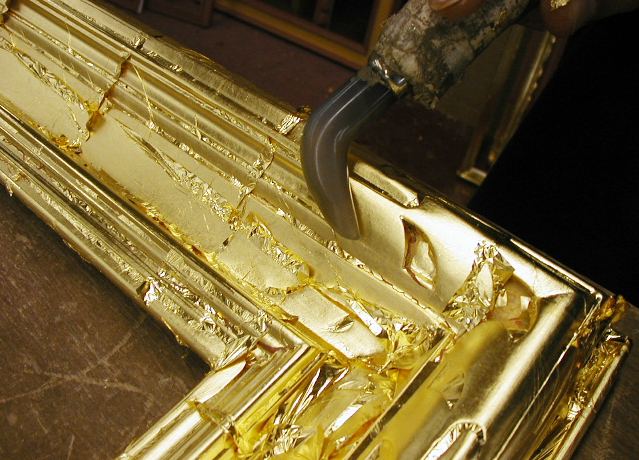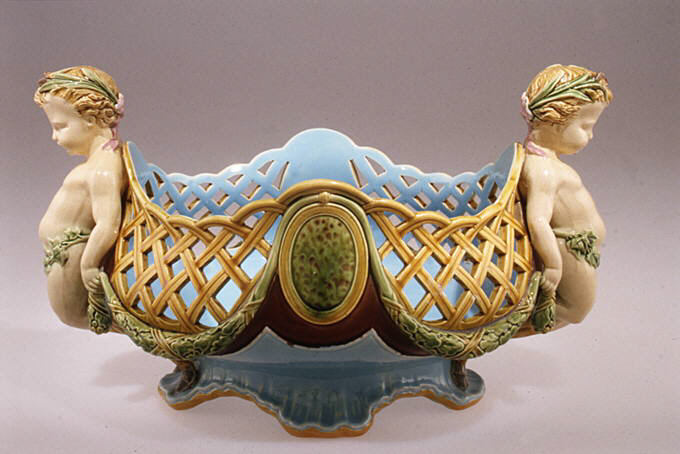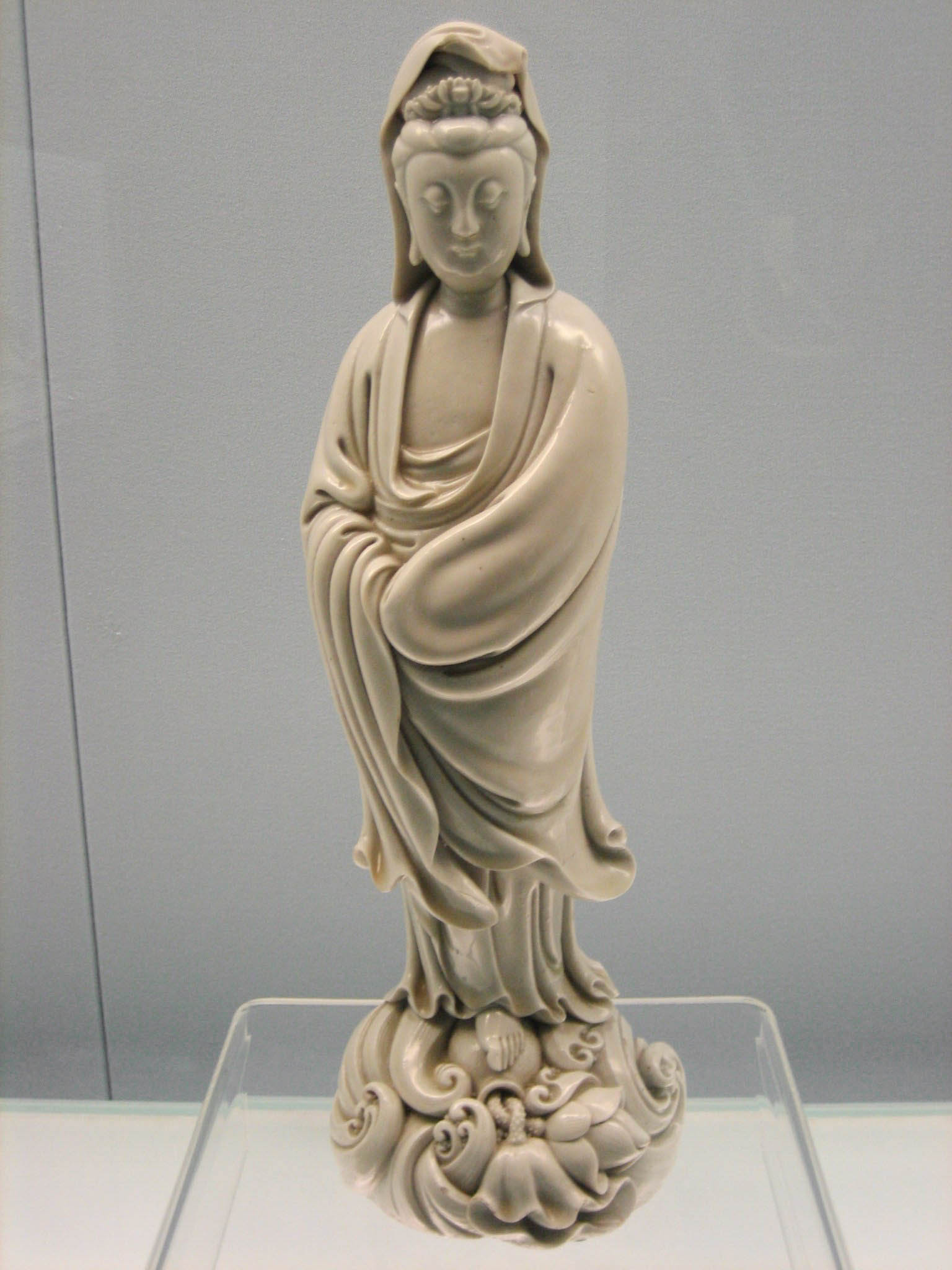|
Samuel Keys
Samuel Keys (1771 – 1850) was an English china painter. Life His family background is not known. Keys was one of the principal gilders and china-painters in the Derby china factory under William Duesbury the elder, to whom Keys was articled. He was highly regarded, and much of the success of the china, especially the figures in the Dresden style, was owing to his skill in decoration. On 3 August 1795, in Dronfield, Derbyshire, he married Hannah Grattan. Keys left Derby some years before the close of the factory, and worked under Minton in the Staffordshire Potteries district. He returned later to Derby, where he died in 1850, in his eightieth year. Keys preserved his delicacy of execution to the last. He collected materials for the history of the Derby china factory, which form the foundation of subsequent accounts. His sons Keys left three sons, all apprenticed at the Derby factory. John Keys (bapt. 1797, died 1825) became a skilled flower-painter in water-colour, and teac ... [...More Info...] [...Related Items...] OR: [Wikipedia] [Google] [Baidu] |
China Painter
China painting, or porcelain painting, is the decoration of glazed porcelain objects such as plates, bowls, vases or statues. The body of the object may be hard-paste porcelain, developed in China in the 7th or 8th century, or soft-paste porcelain (often bone china), developed in 18th-century Europe. The broader term ceramic painting includes painted decoration on lead-glazed earthenware such as creamware or tin-glazed pottery such as maiolica or faience. Typically the body is first fired in a kiln to convert it into a hard porous biscuit or bisque. Underglaze decoration may then be applied, followed by glaze, which is fired so it bonds to the body. The glazed porcelain may then be painted with overglaze decoration and fired again to bond the paint with the glaze. Most pieces use only one of underglaze or overglaze painting, the latter often being referred to as "enamelled". Decorations may be applied by brush or by stenciling, transfer printing, lithography and screen printing ... [...More Info...] [...Related Items...] OR: [Wikipedia] [Google] [Baidu] |
Gilding
Gilding is a decorative technique for applying a very thin coating of gold over solid surfaces such as metal (most common), wood, porcelain, or stone. A gilded object is also described as "gilt". Where metal is gilded, the metal below was traditionally silver in the West, to make silver-gilt (or ''vermeil'') objects, but gilt-bronze is commonly used in China, and also called ormolu if it is Western. Methods of gilding include hand application and gluing, typically of gold leaf, chemical gilding, and electroplating, the last also called gold plating. Parcel-gilt (partial gilt) objects are only gilded over part of their surfaces. This may mean that all of the inside, and none of the outside, of a chalice or similar vessel is gilded, or that patterns or images are made up by using a combination of gilt and ungilted areas. Gilding gives an object a gold appearance at a fraction of the cost of creating a solid gold object. In addition, a solid gold piece would often be too so ... [...More Info...] [...Related Items...] OR: [Wikipedia] [Google] [Baidu] |
Royal Crown Derby
The Royal Crown Derby Porcelain Company is the oldest or second oldest remaining English porcelain manufacturer, based in Derby, England (disputed by Royal Worcester, who claim 1751 as their year of establishment). The company, particularly known for its high-quality bone china, having produced tableware and ornamental items since approximately 1750. It was known as 'Derby Porcelain' until 1773, when it became 'Crown Derby', the 'Royal' being added in 1890. The factory closed down in the past under Royal Doulton ownership, but production was revived under the renewed ownership of Hugh Gibson and Pearson family. Derby Porcelain covers the earliest history of this and other porcelain producers in 18th-century Derby. History William Duesbury I and II In 1745 André Planché, a Huguenot immigrant from Saxony, settled in Derby, where between 1747 and 1755 he made soft-paste porcelain vases and figurines. At the beginning of 1756 he formed a business partnership with William ... [...More Info...] [...Related Items...] OR: [Wikipedia] [Google] [Baidu] |
William Duesbury
William Duesbury (1725–1786) was an English enameller, in the sense of a painter of porcelain, who became an important porcelain entrepreneur, founder of the Royal Crown Derby and owner of porcelain factories at Bow, Chelsea, Derby and Longton Hall. Biography Duesbury was born on 7 September 1725. to William Duesbury, currier, of Cannock in Staffordshire. Around 1742 he was working as an "enameller" painting china in London, where he remained until 1753; he decorated Chelsea porcelain and perhaps other wares. Subsequently, between 1754 and 1755, he lived and worked in Longton Hall, where his father lived and where there was a small china works. On 1 January 1756 he moved with his father to Derby having acquired a share in the Derby potworks on Cockpit Hill with his new partners John Heath and Andrew Planche (1728–1805) a talented French Huguenot potter. Planche did not remain long in the partnership and left Derby. Duesbury with Heath's financial backing opened a ... [...More Info...] [...Related Items...] OR: [Wikipedia] [Google] [Baidu] |
Dresden China
Meissen porcelain or Meissen china was the first European hard-paste porcelain. Early experiments were done in 1708 by Ehrenfried Walther von Tschirnhaus. After his death that October, Johann Friedrich Böttger continued von Tschirnhaus's work and brought this type of porcelain to the market, financed by King Augustus II of Poland, Augustus the Strong, King of Poland and Elector of Saxony. The production of porcelain in the royal factory at Meissen, near Dresden, started in 1710 and attracted artists and artisans to establish, arguably, the most famous porcelain manufacturer known throughout the world. Its signature logo, the crossed swords, was introduced in 1720 to protect its production; the mark of the swords is reportedly one of the oldest trademarks in existence. ''Dresden porcelain'' (or "china") was once the usual term for these wares, until in 1975 the (Higher Munich State Court) decided in favour of the Saxon Porcelain Manufactory Dresden, which alone was then allowed ... [...More Info...] [...Related Items...] OR: [Wikipedia] [Google] [Baidu] |
Dronfield
Dronfield is a town in North East Derbyshire, England, which includes Dronfield Woodhouse and Coal Aston. It lies in the valley of the River Drone between Chesterfield and Sheffield. The Peak District National Park is to the west. The name comes from the Old English ''Dranfleld'', probably meaning an open land infested with drone bees. The town existed before the 1086 Domesday Book, and has a 13th-century parish church. In 1662, Charles II granted the town a market, although this later ceased. The industrial history of the town includes coal mining, the wool trade, the production of soap and steel, and engineering. Today a range of manufacturing firms still operate in the town. The stadium to the north of the town is officially " The Home of Football", providing the playing surface for Sheffield F.C., the world's oldest football club. Dronfield's population increased in the post-war years from 6,500 in 1945 to its current size of just over 21,000. History Dronfield ... [...More Info...] [...Related Items...] OR: [Wikipedia] [Google] [Baidu] |
Mintons
Mintons was a major company in Staffordshire pottery, "Europe's leading ceramic factory during the Victorian era", an independent business from 1793 to 1968. It was a leader in ceramic design, working in a number of different ceramic bodies, decorative techniques, and "a glorious pot-pourri of styles - Rococo shapes with Oriental motifs, Classical shapes with Medieval designs and Art Nouveau borders were among the many wonderful concoctions". As well as pottery vessels and sculptures, the firm was a leading manufacturer of tiles and other architectural ceramics, producing work for both the Houses of Parliament and United States Capitol. The family continued to control the business until the mid-20th century. Mintons had the usual Staffordshire variety of company and trading names over the years, and the products of all periods are generally referred to as either "Minton", as in "Minton china", or "Mintons", the mark used on many. Mintons Ltd was the company name from 1879 ... [...More Info...] [...Related Items...] OR: [Wikipedia] [Google] [Baidu] |
Staffordshire Potteries
The Staffordshire Potteries is the industrial area encompassing the six towns Burslem, Fenton, Hanley, Longton, Stoke and Tunstall, which is now the city of Stoke-on-Trent in Staffordshire, England. North Staffordshire became a centre of ceramic production in the early 17th century, Fleming, John & Hugh Honour. (1977) ''The Penguin Dictionary of Decorative Arts. '' London: Allen Lane, p. 752. due to the local availability of clay, salt, lead and coal. Spread Hundreds of companies produced all kinds of pottery, from tablewares and decorative pieces to industrial items. The main pottery types of earthenware, stoneware and porcelain were all made in large quantities, and the Staffordshire industry was a major innovator in developing new varieties of ceramic bodies such as bone china and jasperware, as well as pioneering transfer printing and other glazing and decorating techniques. In general Staffordshire was strongest in the middle and low price ranges, though the fine ... [...More Info...] [...Related Items...] OR: [Wikipedia] [Google] [Baidu] |
Figurine
A figurine (a diminutive form of the word ''figure'') or statuette is a small, three-dimensional sculpture that represents a human, deity or animal, or, in practice, a pair or small group of them. Figurines have been made in many media, with clay, metal, wood, glass, and today plastic or resin the most significant. Ceramic figurines not made of porcelain are called terracottas in historical contexts. Figures with movable parts, allowing limbs to be posed, are more likely to be called dolls, mannequins, or action figures; or robots or automata, if they can move on their own. Figurines and miniatures are sometimes used in board games, such as chess, and tabletop role playing games. The main difference between a figurine and a statue is size. There is no agreed limit, but typically objects are called "figurines" up to a height of perhaps , though most types are less than high. Prehistory In China, there are extant Neolithic figurines. European prehistoric figurines of wome ... [...More Info...] [...Related Items...] OR: [Wikipedia] [Google] [Baidu] |
Parian Ware
Parian ware is a type of biscuit porcelain imitating marble. It was developed around 1845 by the Staffordshire pottery manufacturer Mintons, and named after Paros, the Greek island renowned for its fine-textured, white Parian marble, used since antiquity for sculpture. It was also contemporaneously referred to as ''Statuary Porcelain'' by Copeland. Parian was essentially designed to imitate carved marble,Information on Parian (Stoke Museums) with the great advantage that it could be prepared in a liquid form and cast in a mould, enabling mass production. Invention The early history of the invention of Parian was confused at the time, with several firms ...[...More Info...] [...Related Items...] OR: [Wikipedia] [Google] [Baidu] |
1771 Births
Events January– March * January 5 – The Great Kalmyk ( Torghut) Migration is led by Ubashi Khan, from the east bank of the Lower Volga River back to the homeland of Dzungaria, at this time under Qing Dynasty rule. * January 9 – Emperor Go-Momozono accedes to the throne of Japan, following his aunt's abdication. * February 12 – Upon the death of Adolf Frederick, he is succeeded as King of Sweden by his son Gustav III. At the time, however, Gustav is unaware of this, since he is abroad in Paris. The news of his father's death reaches him about a month later. * March – War of the Regulation: North Carolina Governor William Tryon raises a militia, to put down the long-running uprising of backcountry militias against North Carolina's colonial government. * March 12 – The North Carolina General Assembly establishes Wake County (named for Margaret Wake, the wife of North Carolina Royal Governor William Tryon) from portions of Cumb ... [...More Info...] [...Related Items...] OR: [Wikipedia] [Google] [Baidu] |
1850 Deaths
Year 185 ( CLXXXV) was a common year starting on Friday (link will display the full calendar) of the Julian calendar. At the time, it was known as the Year of the Consulship of Lascivius and Atilius (or, less frequently, year 938 ''Ab urbe condita''). The denomination 185 for this year has been used since the early medieval period, when the Anno Domini calendar era became the prevalent method in Europe for naming years. Events By place Roman Empire * Nobles of Britain demand that Emperor Commodus rescind all power given to Tigidius Perennis, who is eventually executed. * Publius Helvius Pertinax is made governor of Britain and quells a mutiny of the British Roman legions who wanted him to become emperor. The disgruntled usurpers go on to attempt to assassinate the governor. * Tigidius Perennis, his family and many others are executed for conspiring against Commodus. * Commodus drains Rome's treasury to put on gladiatorial spectacles and confiscates property to s ... [...More Info...] [...Related Items...] OR: [Wikipedia] [Google] [Baidu] |









